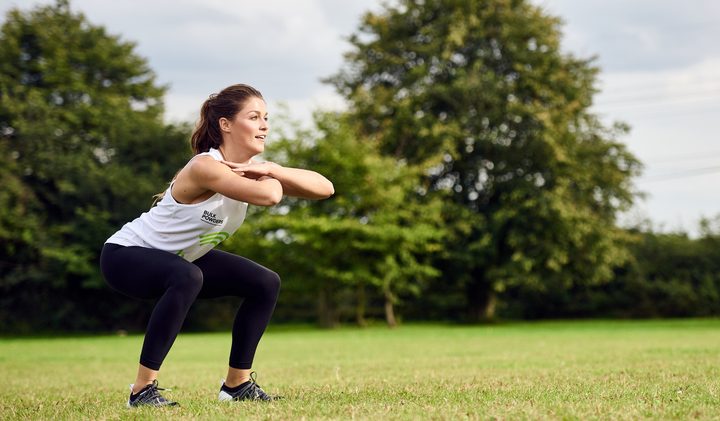HIIT training has revolutionised the format of the fitness industry in recent times and has provided an alternative to typical workout methodologies. The aim of this article is to provide you with an insight into HIIT training, how it works, what its benefits are and what its disadvantages are.
WHAT EXACTLY IS HIIT?
HIIT stands for ‘High Intensity Interval Training’ with the format of the workouts consisting of short intense periods of exercise along with short intervals of rest. The workouts generally last around 20-25 minutes but can range from 4 minutes up to 35 minutes.
The intensity of the workout should be towards maximal levels (85-95% of your max heart rate). So in the short periods of work, you have to give your all to the exercise you are doing. The point is, you do the same amount of work that you would do when exercising at a moderate, continuous intensity, but in a shorter period of time.
HIIT TRAINING EXAMPLES
With HIIT, you can modify variables within the workout to suit your fitness level or fitness goals. You can edit the frequency of sets, intensity of sets and the duration of the sets. For example, you could do 15 sets of treadmill sprints, at 85% of max heart rate, for 40 seconds work, 20 seconds rest. If you try to work at a 2:1 work to rest ratio you will optimise the benefits from the exercise completed.
You can also vary the style of your HIIT. It may be running, cycling, swimming, or a range of different body weight or weighted exercises! As long as the exercises can be performed at a high intensity for short periods of time and be repeated, it should be functional for a HIIT session.
6 KEY BENEFITS OF HIIT
This training has been accredited by lots of exercise scientists and health experts due to a number of reasons.
1.) Firstly, its quick. One of the main reasons people struggle to keep themselves physically fit is because of time constraints. With a HIIT session, it can be done in 20 minutes. So hopefully, the majority of people can find 20 minutes in their day to exercise and still have the same or potentially greater health effects than say going on a 1-hour run.
2.) Secondly, HIIT sessions can be carried out wherever you want with minimal equipment, making it so easy to fit a HIIT workout into your daily routine!
3.) HIIT significantly improves your aerobic and anaerobic systems, giving it an edge over standard endurance training. In terms of muscle adaptations, it has been found to increase mitochondrial content (the cells that provide energy for muscle contraction) and increase capillary density; allowing greater blood flow to exercising muscles.
4.) HIIT also leads to cardiovascular adaptations such as increased cardiac output, stroke volume, blood volume and VO2 Max. This basically means that you will have more oxygen and more blood circulating round your body to provide energy and remove waste products.
5.) The body also increases the intramuscular triglyceride content which means there are more fat stores surrounding the muscle. This is beneficial as fat is a great source of energy which will improve exercise performance in the long term.
6.) All these adaptations will facilitate training improvements. They will allow the body to train harder and for longer. It will help increase the rate of muscle breakdown which means more muscle will be resynthesized in the long term. It also helps the body to utilise fat more efficiently and can help reduce body fat percentages.
DISADVANTAGES OF HIIT
As the intensity of HIIT is so high, you need to have high levels of motivation in order to complete it to a suitable level. So if you are having an off day or not really feeling the workout, you are more likely to limit what you get from the session.
Another disadvantage is, throughout the session, power output decreases. So if you are looking to train power and strength, this may not be the ideal workout format for you. HIIT will generally target cardiovascular endurance and muscular endurance.
SUMMARY
HIIT is a fantastic, fun, quick way to work out and keep fit. As more research develops in this area, the more benefits we find over other traditional research methods. Take these factors into consideration when planning your workout styles from now on!
